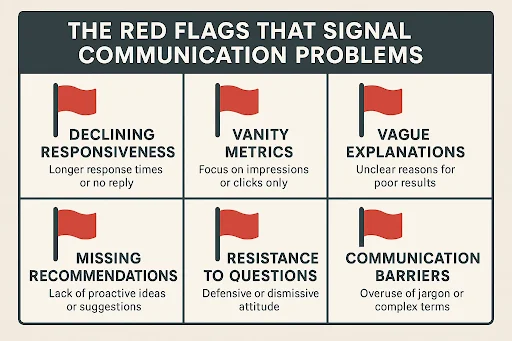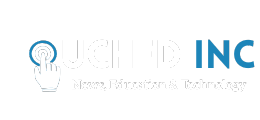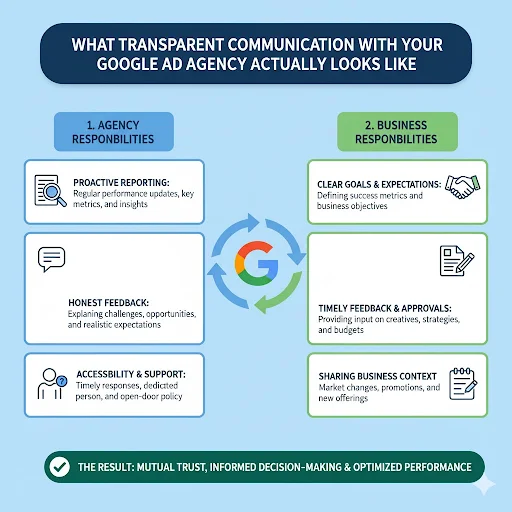A healthcare company owner vented to me last month about their agency relationship. They received monthly reports full of graphs and numbers, but had no idea what anything meant or whether campaigns were actually working. When they asked questions, responses came days later filled with technical jargon that explained nothing. After six months of confusion, they finally realized the agency was hiding poor performance behind complicated reports. They’d wasted ₹4.5 lakhs because they didn’t know what good agency communication looked like.
This pattern repeats endlessly. Businesses hire agencies, receive impressive-looking reports, and assume everything’s fine without understanding what the data actually reveals. Meanwhile, poor communication masks problems that could be fixed if addressed transparently.
The Reporting Reality Nobody Explains
Here’s what most businesses don’t understand about agency communication: reporting should illuminate performance clearly, not obscure it behind complexity. Professional agencies recognize reports as client education tools, not just data dumps proving they’re working. The best reports connect campaign metrics directly to business outcomes you care about—revenue, leads, customer acquisition costs, ROI.
Monthly PPC reports should include campaign overviews showing at-a-glance performance, key metrics like conversions, cost per conversion, ROAS, CTR, CPC, and Quality Scores, performance trends comparing current periods to previous ones, top-performing campaigns and keywords, areas requiring attention or improvement, and strategic recommendations for next steps. Each element serves a purpose,educating you about performance while building accountability for results.
The language matters enormously. Professional agencies explain performance in plain terms tied directly to client goals. Instead of “CTR improved 23% while CPC decreased 15%,” they say “Your ads are attracting more qualified clicks at lower cost, reducing acquisition expense by ₹45,000 monthly while maintaining lead volume”. The difference? One reports metrics, the other explains business impact.
Visual presentation affects comprehension dramatically. Reports should use charts, graphs, and visuals making trends obvious at a glance rather than burying insights in spreadsheet rows. Well-designed reports take 5-10 minutes to understand versus 30-45 minutes deciphering data tables. This accessibility enables productive strategy discussions rather than meetings spent just explaining what numbers mean.
Frequency determines whether communication maintains alignment or creates disconnection. Monthly reports work for most relationships, with weekly updates for high-velocity accounts requiring closer monitoring. Regular cadences prevent surprises—you know when to expect updates and can plan strategic discussions accordingly.
The transparency around account access matters critically. You should have full administrator access to your own Google Ads account always. Agencies manage campaigns with delegated permissions you grant and can revoke if needed. Any agency refusing complete account access is hiding something or creating hostage situations if you try leaving.
The Communication Framework That Actually Works
This is where understanding what separates professional google ad agency relationships from dysfunctional ones becomes critical. Great partnerships are built on communication structures that maintain alignment, prevent misunderstandings, and enable collaborative problem-solving.
Clear expectations get established upfront during onboarding. Professional agencies define communication protocols—how often you’ll meet, what reporting you’ll receive, who your main contacts are, how quickly they’ll respond to questions, what they need from you, and how decisions get made. These frameworks prevent confusion that damages relationships.
Regular check-ins maintain strategic alignment beyond just monthly reports. Many agencies schedule brief weekly touchpoints discussing performance trends, addressing concerns, and aligning on priorities. These frequent interactions catch problems early before they compound into crises. Monthly strategic reviews dive deeper into performance analysis, competitive landscape changes, and next-quarter planning.
Responsive communication separates professionals from mediocre providers. Questions should get answered within one business day, not after three-day delays. Urgent issues receive same-day attention. This responsiveness builds trust that agencies actually prioritize your success. Slow responses suggest you’re not important enough for their attention.
Proactive outreach demonstrates strategic thinking rather than reactive firefighting. Professional agencies contact you when they notice opportunities, competitive threats, or performance anomalies—not just during scheduled meetings. “Hey, I noticed competitor X launched aggressive campaigns last week. Here’s my recommendation for responding…” shows engaged partnership versus passive management.
Collaborative problem-solving rather than blame-shifting characterizes healthy relationships. When performance dips, professional agencies present data showing what happened, explain contributing factors honestly, and propose corrective actions with clear timelines. They own results rather than making excuses about algorithm changes, competitive dynamics, or external factors beyond control.
The Strategic Discussions That Drive Growth
Working with a qualified google ads agency should generate strategic insights informing broader business decisions, not just campaign tactics. The best partnerships surface learnings that shape marketing strategy, product positioning, and growth planning.
Campaign data reveals customer insights most businesses miss. Which keywords convert best tells you how customers describe their problems and search for solutions. Geographic performance patterns show where demand concentrates and where expansion opportunities exist. Device and time-of-day trends reveal when and how your audiences engage. Professional agencies translate this data into strategic recommendations extending beyond just advertising.
Competitive intelligence gathered through auction insights and market analysis informs positioning decisions. Who dominates which keywords? What messaging do competitors emphasize? Where do gaps exist in competitive coverage? These insights guide not just advertising but product development, pricing strategy, and go-to-market planning.
Testing results provide strategic guidance about messaging, offers, and audience targeting. When ad copy emphasizing “fast delivery” outperforms messaging about “premium quality,” that reveals what motivates your customers most. Landing page tests showing certain images or value propositions converting better inform website design, email marketing, and sales presentations.
Seasonal patterns and demand forecasting enable proactive business planning. Agencies analyzing historical data recognize when your peak periods happen, how far ahead planning should occur, and what budget adjustments make sense. This intelligence helps inventory planning, staffing decisions, and cash flow management beyond just advertising.
Performance benchmarking shows whether results represent strong performance or indicate problems compared to industry standards. Knowing your 8.5% conversion rate significantly exceeds the 6% industry average builds confidence versus worrying you’re underperforming. Context transforms numbers from meaningless data points into actionable insights.
The Red Flags That Signal Communication Problems

Recognizing warning signs early prevents wasting months with agencies whose communication failures undermine partnership value. Specific patterns indicate fundamental problems requiring immediate attention or agency replacement.
Declining responsiveness suggests your account isn’t priority. When response times gradually extend from same-day to 2-3 days, or emails go unanswered entirely, agencies are deprioritizing your relationship. This degradation rarely improves without confrontation.
Reports focusing on vanity metrics rather than business outcomes hide poor results. When monthly presentations emphasize impressions, clicks, and CTR without connecting to conversions, revenue, or ROI, agencies are avoiding accountability for what matters. Professional reporting always ties activity metrics to business impact.
Vague explanations when performance declines indicate agencies don’t understand causes or won’t admit mistakes. “Algorithm changes” or “increased competition” without supporting data and corrective action plans are excuses, not analysis. Professional agencies diagnose problems systematically and implement solutions.
Missing proactive recommendations signals agencies are just managing campaigns on autopilot without strategic thinking. Months passing without them suggesting tests, expansions, or strategic pivots means they’ve gotten complacent. Great agencies continuously push boundaries through innovation and testing.
Resistance to questions or defensive reactions when challenged reveals insecurity about performance. Professional agencies welcome questions because they’re confident their strategies and results withstand scrutiny. Defensiveness suggests they know performance is weak but won’t acknowledge it.
Communication barriers created through jargon and complexity intentionally obscure understanding. Agencies should explain things clearly enough that you understand performance, strategies, and recommendations. Deliberate obfuscation through technical terminology prevents accountability.
The Partnership That Compounds Through Collaboration
Agency relationships succeed through communication frameworks maintaining alignment, transparency, and mutual accountability. The businesses thriving with agencies recognize communication as partnership infrastructure enabling everything else.
Active participation rather than passive delegation maximizes value. Agencies need your input—business context, competitive intelligence, customer insights, strategic priorities. Withholding information or being unresponsive prevents them from optimizing effectively. The best results come from collaborative partnerships where both parties contribute actively.
Trust built through transparency compounds over time. When agencies consistently deliver what they promise, communicate honestly about challenges, and demonstrate accountability for results, confidence grows. This trust enables trying bigger bets, faster decisions, and strategic risks generating breakthrough results.
Long-term partnerships accumulate institutional knowledge about your business, customers, and market that new agencies would need years developing. Agencies understanding your industry nuances, competitive dynamics, and seasonal patterns optimize more effectively than those starting fresh. This accumulated intelligence represents major value compounding with relationship duration.
Communication integration across Google Ads management and other channels like Facebook advertising creates coordinated strategies delivering superior results versus siloed channel management.
The businesses that succeed recognize agency communication isn’t just operational necessity—it’s strategic infrastructure enabling the transparency, collaboration, and accountability that transform advertising from expense into growth engine. They establish clear frameworks during onboarding, maintain regular touchpoints beyond monthly reports, demand plain-language explanations tying metrics to business impact, surface problems early through honest dialogue, and hold agencies accountable while providing the support agencies need succeeding.
The alternative is accepting confused disconnection where you receive reports without understanding them, questions go unanswered or get responses you can’t interpret, poor performance hides behind complexity, and months pass before realizing the relationship isn’t working. Smart businesses recognize communication quality as fundamental to partnership success, making it priority one when evaluating and managing agency relationships.
Campaign performance ultimately depends on the strategic thinking, technical expertise, and continuous optimization agencies provide—but all that capability gets wasted when communication failures prevent you from understanding what’s happening, providing needed input, or holding agencies accountable for results they claim to deliver.


